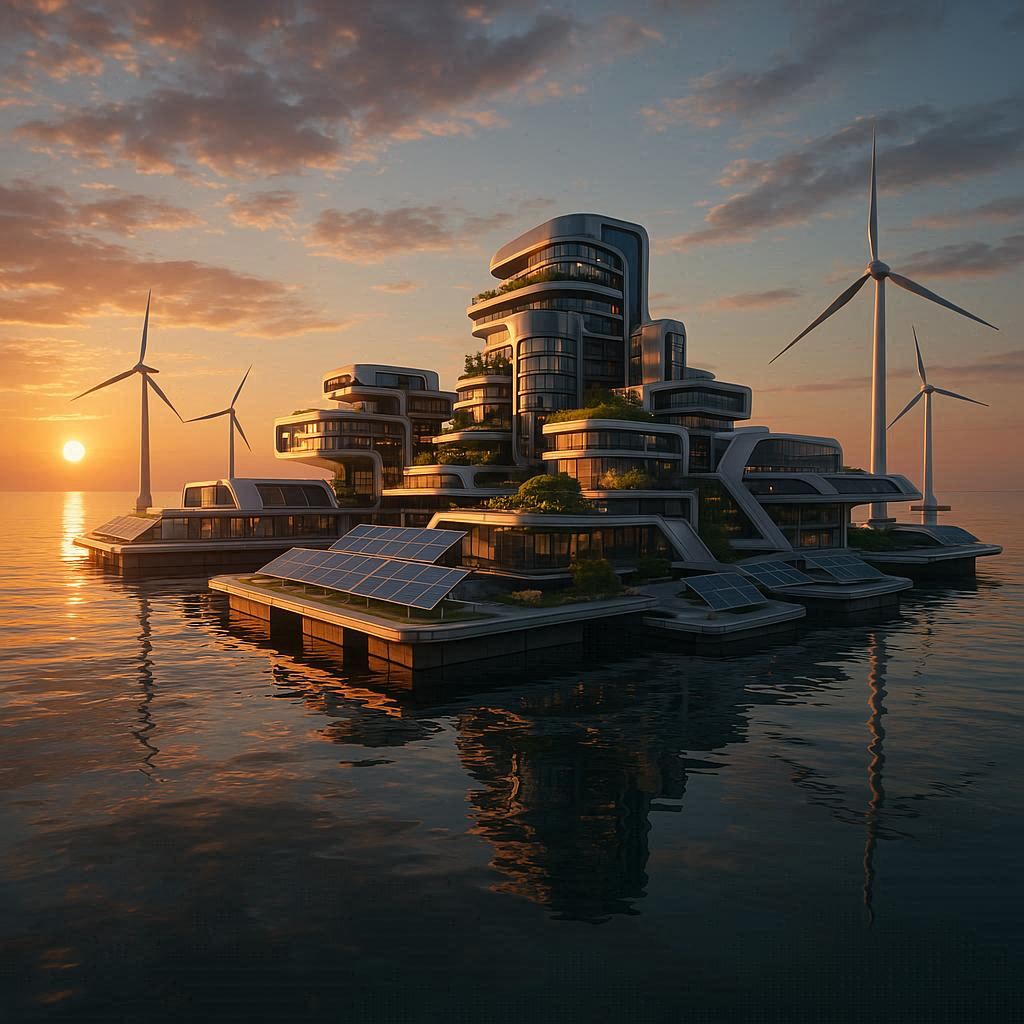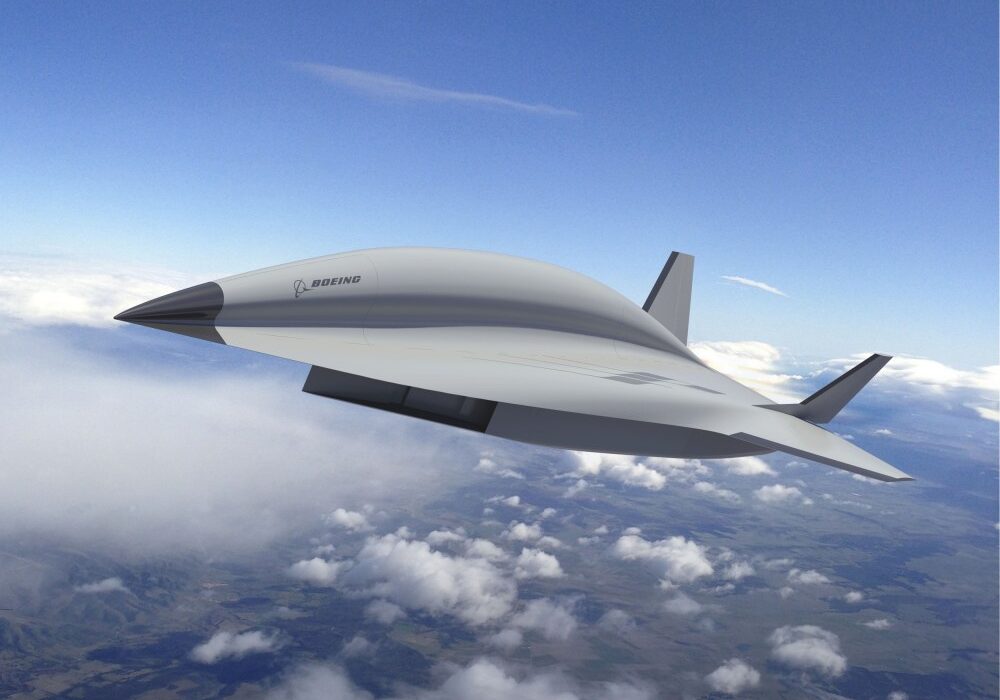The concept of floating cities has long occupied the realms of science fiction, inspiring visions of futuristic metropolises gliding across the oceans, shimmering under artificial sunlight, and bustling with life. Yet as the 21st century progresses, these fantastical ideas are steadily moving from the pages of novels and concept art into the domain of serious scientific inquiry and engineering possibility. The driving force behind this exploration is necessity. By 2050, climate change, rising sea levels, and population pressures may force humanity to rethink the very way we inhabit the planet. Coastal cities around the world are under threat from inundation, and land scarcity in rapidly urbanizing regions is intensifying. Floating cities, once the stuff of imagination, are increasingly viewed as a viable solution to these existential challenges.
Climate Change and Rising Seas
The most pressing catalyst for floating cities is the relentless rise of the oceans. Scientific consensus indicates that global sea levels could rise by as much as one meter by the end of the century if greenhouse gas emissions continue unabated. Such a rise would place hundreds of millions of people at risk, particularly in densely populated coastal regions such as Bangladesh, the Netherlands, Jakarta, and New York City. Conventional solutions, like sea walls and levees, offer temporary protection but are often expensive, ecologically disruptive, and limited in scalability. Floating cities, by contrast, offer a fundamentally adaptive approach: rather than resisting the sea, these structures rise with it. The ocean itself becomes a foundation rather than a threat, a radical reimagining of human settlement.
These cities would not simply be clusters of floating buildings but fully integrated, self-sustaining ecosystems. They would harness renewable energy sources such as solar panels, wind turbines, and wave energy converters to meet their energy demands. Innovative water management systems could extract and purify water from the surrounding ocean, while vertical farming and aquaponics could provide food security. By integrating these technologies, floating cities could reduce their environmental footprint while providing resilient habitats for millions.
Engineering the Future
Creating a city capable of floating on the ocean is no small feat. It requires the convergence of advanced engineering, materials science, and urban planning. The fundamental principle is buoyancy: structures must be designed to float without tipping, sinking, or succumbing to the forces of waves, storms, and currents. Engineers are exploring modular platforms, often based on floating concrete pontoons or lightweight composite materials, which can be interconnected to form larger urban areas. These platforms must be robust enough to withstand hurricanes, tsunamis, and other extreme weather events that are projected to become more frequent due to climate change.
Innovations in materials science are critical to this vision. Traditional construction materials may corrode or degrade in marine environments, so researchers are developing saltwater-resistant concretes, advanced polymers, and self-healing materials. These technologies not only extend the lifespan of floating structures but also reduce maintenance costs, making long-term habitation economically feasible. Moreover, the integration of flexible, modular architecture allows cities to expand organically, responding dynamically to population growth and changing environmental conditions.
Floating cities also require new approaches to infrastructure. Transportation networks must adapt to water-based environments, incorporating water taxis, autonomous boats, and potentially even floating rail systems. Energy distribution must be decentralized, relying on microgrids powered by renewable sources. Waste management, always a critical concern in urban planning, must be designed to prevent pollution of the surrounding ocean. Innovative approaches such as closed-loop waste-to-energy systems and advanced recycling technologies are being studied to address these challenges.
Social and Cultural Dimensions
Beyond engineering, floating cities raise profound questions about society, governance, and culture. How will communities adapt to life on the open ocean? What social structures will emerge in these novel environments? Floating cities offer an opportunity to rethink urban life, potentially creating more egalitarian, resilient, and sustainable societies. Dense vertical construction could promote walkability and reduce reliance on cars, while shared communal spaces could foster stronger social bonds.
Cultural identity will also play a role. Floating cities could become melting pots of global culture, attracting people from diverse backgrounds who are drawn by the promise of a new frontier. Architecture and urban design may blend aesthetics from different regions, creating vibrant, visually striking environments that celebrate both human creativity and harmony with nature. The challenge will be balancing innovation with inclusivity, ensuring that these futuristic habitats are accessible to a broad spectrum of humanity rather than exclusive enclaves for the wealthy.
Economic Viability
For floating cities to become reality by 2050, they must also make economic sense. The initial costs are undeniably high: constructing resilient marine platforms, developing self-sufficient energy and water systems, and ensuring safety in extreme weather environments require significant investment. However, proponents argue that the long-term benefits could outweigh these costs. Floating cities can reduce land scarcity pressures, offer protection from natural disasters, and even open new economic opportunities in aquaculture, renewable energy, and marine research.
Private enterprise and public-private partnerships are already exploring these opportunities. Pioneering projects in Asia, Europe, and North America are testing small-scale floating communities and prototypes, demonstrating that the concept is technologically feasible. With proper investment, economies of scale could make large-scale floating cities financially viable, turning what was once a speculative dream into a practical solution for the urbanized, climate-threatened world of 2050.
Environmental Considerations
While floating cities offer a solution to rising seas, they also pose environmental challenges. Marine ecosystems are delicate, and the introduction of large artificial structures could disrupt habitats, alter currents, and affect local biodiversity. To mitigate these risks, planners are exploring designs that integrate seamlessly with the natural environment. Submerged portions of platforms can be engineered as artificial reefs, promoting marine life rather than harming it. Renewable energy installations such as wave and tidal generators can be designed to minimize ecological impact, harnessing ocean power without disturbing aquatic life.
Moreover, floating cities present an opportunity for environmental stewardship. By reducing reliance on terrestrial resources and promoting closed-loop systems, these cities can become laboratories for sustainable living. Innovations in aquaponics, energy efficiency, and water management developed for floating cities could influence urban planning on land, creating a ripple effect of sustainability across the globe.
Psychological and Human Factors
Living on water introduces unique psychological and social dynamics. Humans are inherently terrestrial beings, and prolonged exposure to the vastness of the ocean could affect mental health, social cohesion, and lifestyle patterns. Urban designers must consider these factors carefully, ensuring access to communal spaces, natural light, and recreational areas. Incorporating green spaces, gardens, and even floating parks can help mitigate the sense of isolation and maintain mental well-being.
The architecture of floating cities could also influence social interaction. Compact, modular living units may foster closer community ties, while shared resources and infrastructure could encourage collaboration and collective responsibility. Technology can play a role in enhancing connectivity, providing virtual access to education, entertainment, and communication with the broader world. Balancing technological integration with human-centered design will be key to the long-term success of floating habitats.
Global Perspectives and Collaboration
The creation of floating cities is not a challenge any single nation can tackle alone. International cooperation is essential, both in terms of technology sharing and regulatory frameworks. Maritime law, environmental protection, and jurisdictional governance must be carefully negotiated to prevent conflicts and ensure sustainable development. Collaborative research initiatives between governments, universities, and private companies are already underway, sharing data, prototypes, and best practices to accelerate progress.
Floating cities could also serve as symbols of global unity, demonstrating humanity’s ability to adapt and thrive in the face of climate change. By pooling resources and knowledge, nations could turn a crisis into an opportunity, creating a new model of urban life that transcends borders and fosters cooperation rather than competition.
The Road to 2050
Predicting the exact timeline for floating cities is challenging. Technologically, prototypes already exist, but scaling them to accommodate millions of inhabitants requires breakthroughs in engineering, energy systems, and urban design. Social acceptance, legal frameworks, and economic feasibility are equally critical factors. By 2050, floating cities may emerge initially as specialized communities: research hubs, climate refuges, or luxury resorts. Gradually, these structures could evolve into fully functioning urban centers, demonstrating resilience, sustainability, and livability on a large scale.
The journey to floating cities will not be straightforward. It will require vision, investment, and a willingness to embrace uncertainty. It will demand interdisciplinary collaboration among engineers, architects, urban planners, ecologists, and policymakers. And above all, it will require society to imagine life differently: not as fixed on land but as adaptable, mobile, and intimately connected with the ocean.
A Future Shaped by Water
By 2050, floating cities could transform humanity’s relationship with the planet. They offer a way to adapt to rising seas, relieve population pressures, and create innovative, sustainable urban habitats. Yet they are more than engineering marvels; they are a testament to human resilience, creativity, and courage. The ocean, long viewed as a barrier, becomes a canvas for a new chapter of civilization.
Floating cities challenge us to reconsider what it means to live, work, and thrive. They blur the line between land and water, nature and technology, individual ambition and collective survival. In embracing this vision, humanity demonstrates that even in the face of profound environmental change, it can not only survive but also reimagine its future. The dream of floating cities is no longer confined to fiction. By 2050, it could very well become reality, a floating testament to human ingenuity and hope.






